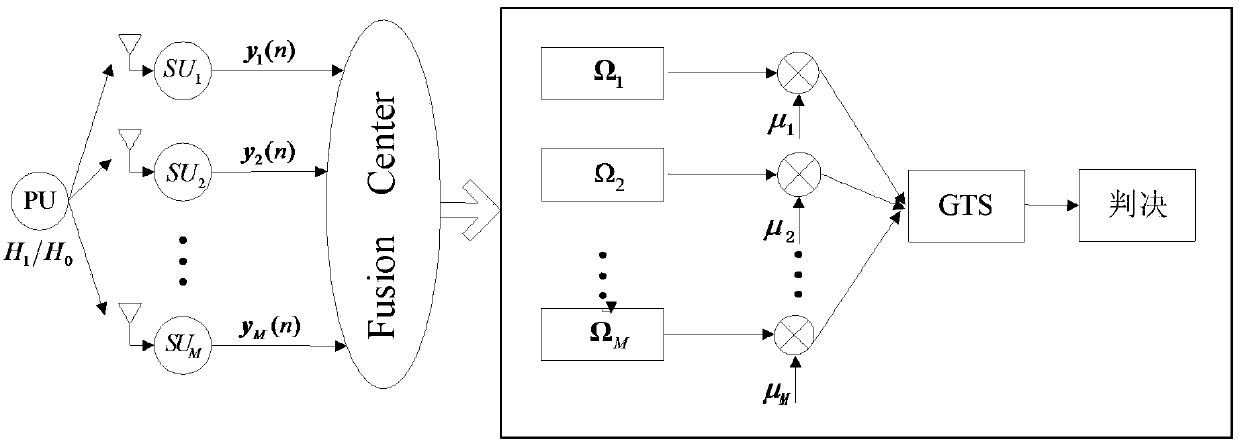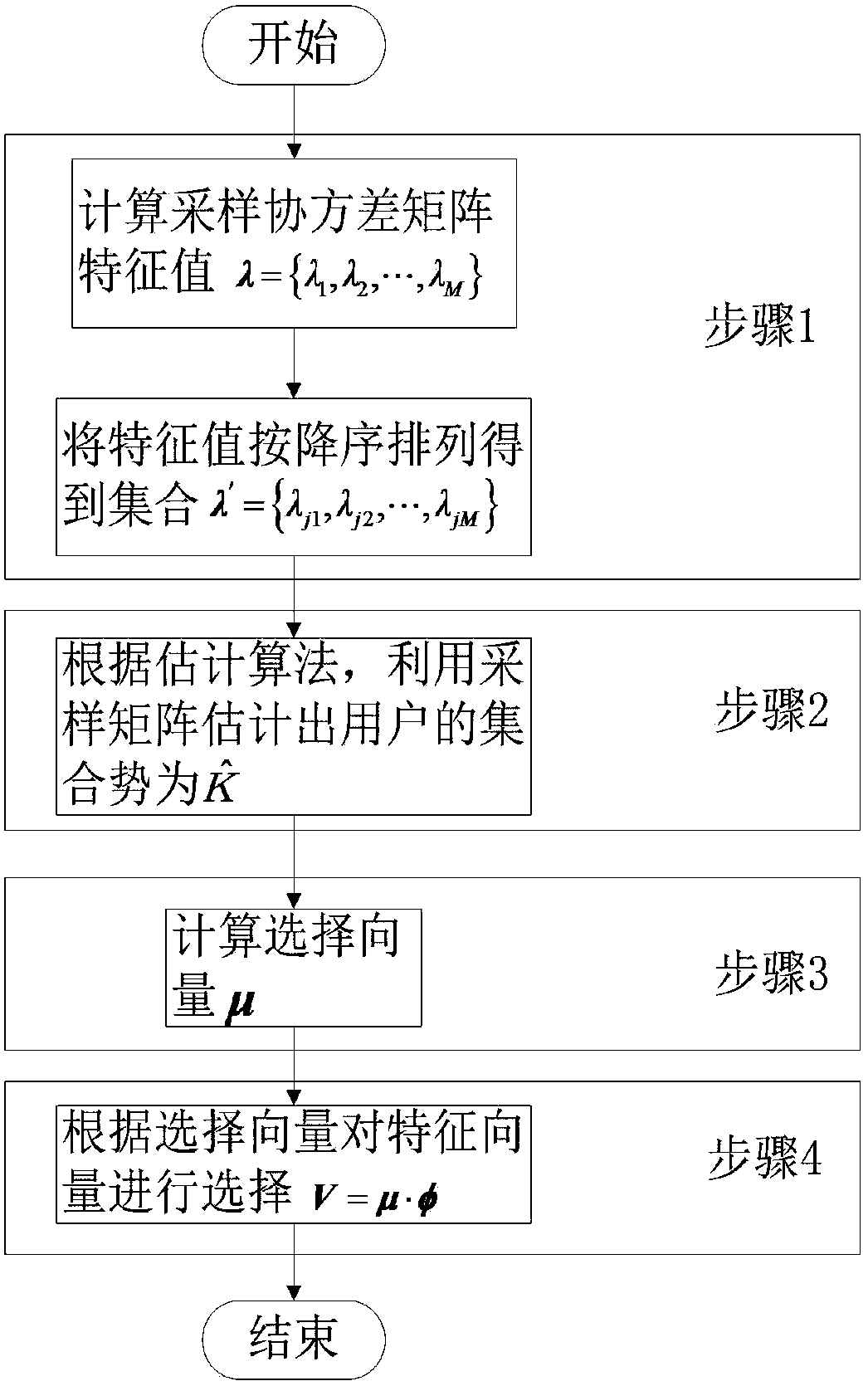A Cognitive Radio Cooperative Spectrum Sensing Method Based on User Aggregate Potential Estimation
A technology of user set and covariance matrix, applied in the field of cognitive radio, can solve the problem of insufficient spectrum sensing performance, and achieve the effect of improving the sensing performance and benefiting the sensing performance
- Summary
- Abstract
- Description
- Claims
- Application Information
AI Technical Summary
Problems solved by technology
Method used
Image
Examples
Embodiment Construction
[0018] In the actual sensing environment, the channel conditions of each SU participating in cooperative sensing are different. Generally, the received signal covariance matrix R s The first K eigenvalues of , may be much larger than the last (M-K) eigenvalues (the received signal covariance matrix has M eigenvalues), that is, λ 1 ≥λ 2 ≥…≥λ K >>λ K+1 ≥…≥λ M , where a larger eigenvalue indicates that the corresponding SU users have better channel conditions and can receive stronger PU signals. Therefore, in this sense, the M SUs participating in cooperative sensing can be divided into users with better channel conditions A set and a set of users with poor channel conditions. Consider using AIC (Akaike Information Criterion), MDL (Minimum Description Length), GAIC (Gerschgorin Akaike Information Criterion), GMDL (Gerschgorin Minimum Description Length), BIC (Bayesian Information Criterion), GBIC (Generalized Bayesian Information Criterion), EEF (Exponentially Embedded F...
PUM
 Login to View More
Login to View More Abstract
Description
Claims
Application Information
 Login to View More
Login to View More - Generate Ideas
- Intellectual Property
- Life Sciences
- Materials
- Tech Scout
- Unparalleled Data Quality
- Higher Quality Content
- 60% Fewer Hallucinations
Browse by: Latest US Patents, China's latest patents, Technical Efficacy Thesaurus, Application Domain, Technology Topic, Popular Technical Reports.
© 2025 PatSnap. All rights reserved.Legal|Privacy policy|Modern Slavery Act Transparency Statement|Sitemap|About US| Contact US: help@patsnap.com



